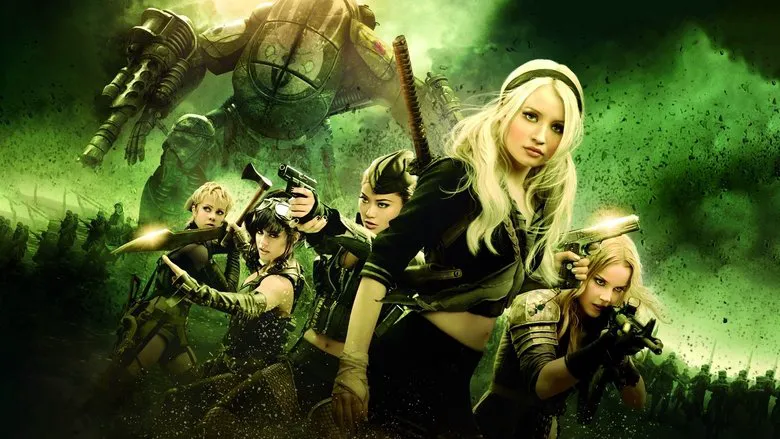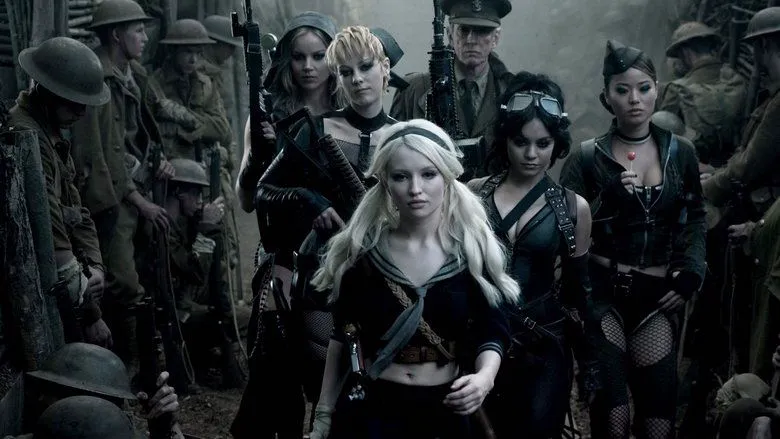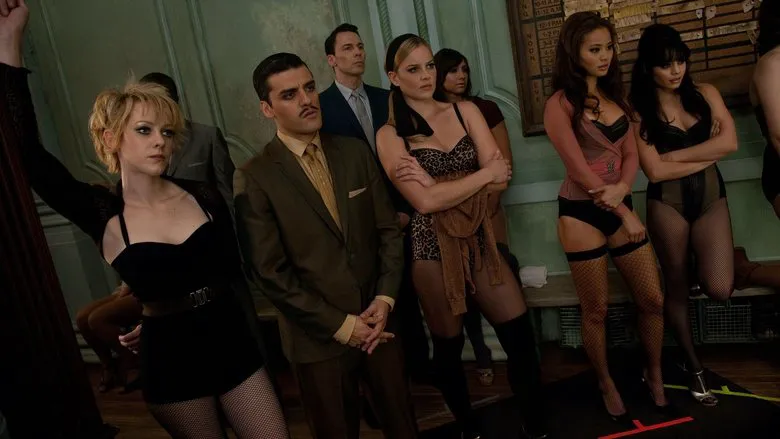Sucker Punch: A Visual Spectacle with a Hollow Core
Set in 1960s Vermont, “Sucker Punch” plunges us into the world of Doll (Emily Browning), a young woman institutionalized in a mental asylum after a tragic accident where she inadvertently kills her younger sister while trying to protect herself from her abusive stepfather. Within the confines of Lennox House, Doll and her fellow inmates devise an elaborate escape plan, one that blurs the lines between reality and fantasy, pitting them against zombies, dragons, and robots in their minds.

Snyder’s Vision: From Adaptation to Originality?
Known for his visually stunning adaptations like “Dawn of the Dead” (2004) and “Guardians of Ga’Hoole” (2010), Zack Snyder ventures into original territory with “Sucker Punch.” It’s as if Snyder is attempting his own version of “Inception” (2010), albeit without the self-authored script of Christopher Nolan’s debut, “Following” (1998). The result? Well, it’s complicated.
Fun Facts:
- The asylum, Lennox House, shares its name with Annie Lennox, whose song “Sweet Dreams (Are Made Of This)” accompanies Doll’s arrival.
- Runes on Doll’s sword subtly narrate the film’s plot.
- The Japanese inscription on Amber’s robot translates to “Warning! Woman driver!”
- The ruined cathedral and dragon’s castle in Doll’s fantasies mirror the asylum’s architecture.
Moulin Rouge Meets Action?
One could argue that “Sucker Punch” is “Moulin Rouge” (2001) reimagined as an action film. The opening scene, with its red curtain and melodramatic slow-motion, suggests that even the “real” world is a performance. Doll’s mind transforms the grim asylum into a brothel, where provocative attire and makeup give way to elaborate action sequences inspired by fantasy, sci-fi, and war films. Each of these sequences begins with a dance by Doll, drawing the viewer into her imagination before snapping back to reality, where she stands exhausted before a captivated audience.

Anachronistic Melodies and Dreamlike Realities
Like “Moulin Rouge,” “Sucker Punch” features anachronistic covers of songs chosen for their lyrical content. Some are even performed by the actors themselves, though only available on the soundtrack. Browning lends her voice to Eurythmics’ “Sweet Dreams (Are Made Of This),” Pixies’ “Where Is My Mind?” and The Smiths’ “Asleep.”
Alternatively, “Sucker Punch” could be seen as a “Brazil” (1985) for the gamer generation. Similar to Terry Gilliam’s dark satire, much of the film unfolds within the fractured psyche of its protagonist, where memories and consciousness merge. However, while Gilliam crafted a mythical, relatable dreamscape, Snyder draws inspiration from Heavy Metal magazine, manga (Browning fights in a revealing Japanese schoolgirl outfit), Tolkien (orcs and dragons), steampunk (clockwork German zombie cyborgs from World War I!), and science fiction (sleek killer robots on high-speed trains). It’s unlikely that any of these elements would be on the minds of young women in the 1960s.

Style Over Substance?
The film’s double framing device, soundtrack, and Snyder’s background in commercials result in a series of music video-esque sequences rather than a cohesive dream narrative. While visually impressive, this spectacle lacks a strong plot and emotional core. The story becomes so entangled in its own artifice that it’s difficult to find anything real, diminishing the sense of danger and leaving only a sense of frantic urgency. Unlike “The Matrix” (where death in the Matrix means death in the real world) or “Inception” (where death leads to limbo), Doll faces no real consequences for dying in battle.
Character Sketches, Not Characters
The characters themselves are underdeveloped, both in terms of writing and performance. Abbie Cornish’s Sweet Pea is tough and cynical, Jamie Chung’s Amber is somber and sweet, Jena Malone’s Rocket is young and enthusiastic, and Vanessa Hudgens’ Blondie is otherworldly. Doll, as her name suggests, is a mannequin, a conduit between the audience and the plot, even delegating her own description to a mentor figure (Scott Glenn’s Wise Man). It’s a shame that the characters weren’t given as much attention as the battles and costume design.